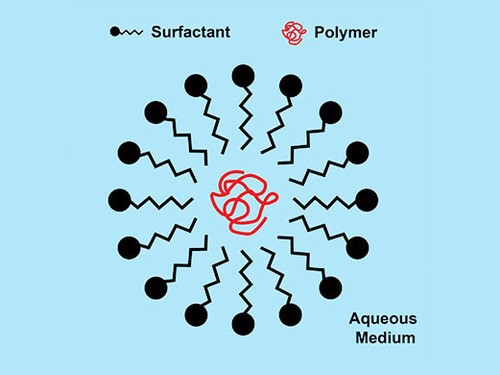What Is A Surfactant? Simple Guide To Understanding Surfactants

Surfactants are great for cleaners for any use they are for. Surfactants increase the effectiveness of various cleaning products to reduce the tension on the surface of water which makes the molecules slipper.
Moreover, surfactants utilize numerous makeup ingredients like chemicals, emulsifiersand foaming agents conditioners, solubilizers, or dispersants. Surfactant is a highly dynamic surface agent.
What Is An Surfactant?
What exactly is a surfactant you ask? So, Surfactants are among the most adaptable outcomes of the chemical industry. There are used in each mechanical sector, from family detergents to penetrating muds, food items to drugs.
Two different finishes can be observed in a single surfactant particle: one is pulled into water (hydrophilic) while the second is drawn into oil (hydrophobic). The fact that it has two parts that dissolve in water and one that is oil-solvent is known as amphiphilic.
They may be used to decrease the liquid's surface tension or provide other methods of putting it.
What Are The Different Types Of Surfactants?
One type of nonionic surfactant suppliers is anionic surfactants. They are found in a variety of disheswashing cleaners, family cleaning arrangements, and individual hygiene items. They are ionized in an answer, which means that they transform into electrostatic particles and negatively charge.
Nonionic surfactants, on the contrary, aren't ionized and consequently have no electric charge. Be that as it may they often form bonds with anionic particles. An advantage of nonionic surfactants is they do not join with calcium and magnesium particles in "hard water" with high mineral content.
Personal Care Truth has identified at least two types of detergents. They can be identified by their ionic properties in water.
Natural Surfactants
The lactylates, sodium lauroyl or sodium stearoyl, are food grade Emulsifiers made of coconut oil and milk sugar. They are amazing creams that provide a greater aroma release.
Lauryl glucose carboxylate is another natural surfactant that provides additional foaming power. Glutamate surfactantslike, disodium cocoyl glutamate, sodium cocoyl glutamate, are gentle, and are produced with amino acids.
They have excellent foaming and cleaning properties, as well as being biodegradable. Vegetable proteins can likewise be a reason for surfactants, such as potassium undecylenoylhydrolysed soy protein and sodium lauroyl oat amino acids.
Modern Surfactants
Many modern surfactants are made by combining oleochemicals with petrochemicals (oil extracted) and are biodegradable. Oleochemicals, or fats utilized to blend these surfactants incorporate coconut and palm oil.
They contain anionic alkyl polyglucosides (decyl lauryl, decyl, and the octyl) that produce fatty alcohol from palm , and glucose from corn starch using green science. The names of these surfactants change depending on the length of the carbon chain.
Cleansers are commonly used as surfactants, however,they are rarely utilised in cleaning agents and shampoos in light of their residue. The most widely recognised non-cleanser surfactants remain sodium lauryl sulfate and sodium Laureth sulfate, viable cleaning agents.
Benefits And Surfactant Applications
Surfactants can be utilized in a variety of applications such as petrochemistry and laundry detergents.
The lactylates (sodium lauroyl and sodium stearoyl) are food-grade emulsifiers that are made by using coconut oil and sugar. They make great creams and provide enhanced aroma discharge.
Past cleaners and detergents, surfactants are utilised in greases, inks, herbicides, anti-fogging fluids and cements, emulsifiers and cleaners. Surfactants also are produced by the human body which is commonly referred to as suprafactants that are aspiratory.
Surfactants naturally occur in the lung. They stop the lungs from collapse by maintaining the surface tension and dampness.
Additionally, surfactants can be used as a fix in ointments like shaving cream. They allow razors to eliminate any stubble , and also limit the disturbance.
A wide and diverse range of applications signifiesprecisely how adaptable and useful surfactants are. Every person will use one IRO Surfactant or similar one, regardless of what they plan to.
Surfactants added to motor greases help hold particles from adhering to the motor components, allowing the details to move effectively and keep a vehicle operating in an appropriate manner.
Surfactants emulsify slick messes and prevent them from setting back on the texture
Cleaning agents are usually enhanced with surfactants that as detergents do, enable detergent to mix with water. This helps cleaning agents get rid of dirt off surfaces.